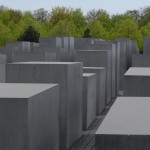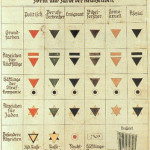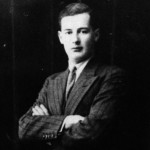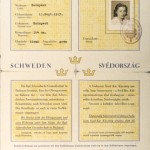Raoul Wallenberg and The Holocaust
(Click on photos to enlarge)
The Holocaust Memorial
This is not a cemetery. These are not tomb stones.
This is the Memorial to the Murdered Jews of Europe, also known as The Holocaust Memorial.
Located in Berlin within a short distance from the Reichstag, the Brandenburg Gate, and Hitler’s underground bunker, this monument attests to the fact that an estimated six million European Jews died during the genocide of World War II. A Final Solution it was called.
Prisoner Identification Chart
Not only Jews were sent to the concentration camps for extermination. An estimated four million others were sent.
While Jews wore yellow badges, a system was used in the concentration camps to identify the other prisoners there:
Red triangle — political prisoners such as social democrats, socialists, trade unionists, Freemasons, communists, anarchists, prisoners of war, spies or traitors, military deserters.
Green triangle — convicts and criminals
Blue triangle — foreign forced laborers and emigrants.
Purple triangle — Jehovah’s Witnesses and members of other pacifist religious groups that refused to pledge allegiance to the Nazi party or to serve in the military.
Pink triangle — homosexual men, sexual offenders, rapists, paedophiles, sexual deviants.
Black triangle — ineffective workers such as Roma females, that is gypsy women, the mentally ill and mentally disabled, alcoholics and drug addicts, vagrants and beggars, pacifists and conscription resisters, prostitutes, lesbians.
Brown triangle — Roma males, or gypsy men.
Could any of these identifications for prisoners apply to you or someone you know?
This list is incomplete. Other groups were targeted by the Nazis such as the Slavs, ethnic Poles, Soviet citizens, persons of colour.
This was life during the Nazi-occupation.
Raoul Gustav Wallenberg
Some of the Jewish people that lived in Budapest, Hungary, had a hope. That hope was with Raoul Gustav Wallenberg.
Born in Sweden in 1912, Mr. Wallenberg came from an important Swedish family. He studied architecture in the United States. He then went to work in other trades in South Africa and Palestine.
Returning to Sweden in 1936, he became employed with an import-export company that was owned by Mr. Kálmán Lauer, a Hungarian Jew. As most of central Europe was occupied by the Nazis, this made life difficult for Mr. Lauer. As a Jew, he did not have the freedom to travel to manage his business, nor visit family back in Hungary. Mr. Wallenberg became an important associate and a connection to Hungary for Lauer. By this time the world had come to learn of the attrocities being committed by the Germans against the peoples of Europe.
Protective Pass
In 1944, Wallenberg was appointed Sweden’s special envoy to Hungary. He worked with the Swedish embassy and issued protective passes to Hungarian Jews. He convinced the Hungarian authorities, who were under the command of the Germans, to honour these passes and grant diplomatic immunity to the bearer. It is believed over 10,000 passes were issued.
He rented buildings, flew the Swedish flag, and declared the property was protected by Swedish diplomatic immunity where he housed about 10,000 people.
He is known to have climbed on top of a train about to head to Auschwitz and hand protective passes to people through doors and ordered anyone with a pass to get off the train. He risked his life many times to help save the lives of others.
Raoul Gustav Wallenberg
Mr. Wallenberg’s life will change during the last year of the war. The Russian forces were advancing on Hungary and on 17 January 1945, during the Siege of Budapest by the Red Army, Raoul Wallenberg was detained on suspicion of espionage and he subsequently disappeared into the Soviet Union.
It is not known exactly when, where, or how Mr. Wallenberg died. It is believed to have been while imprisoned in the Soviet Union. In 2016, Mr. Wallenberg was declared “deceased in absentia” by the Swedish Tax Agency.
Raoul Wallenberg is an honorary citizen of Canada, the United States, Hungary, Australia, and Israel.
The Canadian government declared 17 January, the day on which he disappeared, as “Raoul Wallenberg Day”.
And the United Nations General Assembly declared 27 January as International Holocaust Remembrance Day.
(1) Memorial to the Murdered Jews of Europe. Wikipedia retrieved 2017-11-20
(2) “The Inadequacy of Berlin’s “Memorial to the Murdered Jews of Europe”. The New Yorker. 2012-07-12
(3) The Holocaust. Wikipedia retrieved 2017-11-20
(4) Raoul Wallenberg. Wikipedia retrieved 2017-11-20
(5) The Swedish Schindler Who Disappeared. BBC News website retrieved 2018-01-08
(6) Statement by the Prime Minister of Canada on Raoul Wallenberg Day. 2017-01-17
(7) Designation of National Days and Observances in Canada. Library of Parliament Publication No. 2015-06-E
(8) International Holocaust Rememberance Day. Wikipedia retrieved 2018-01-11
(9) Searching for Raoul Wallenberg. www.raoul-wallenberg.eu retrieved 2018-01-08




